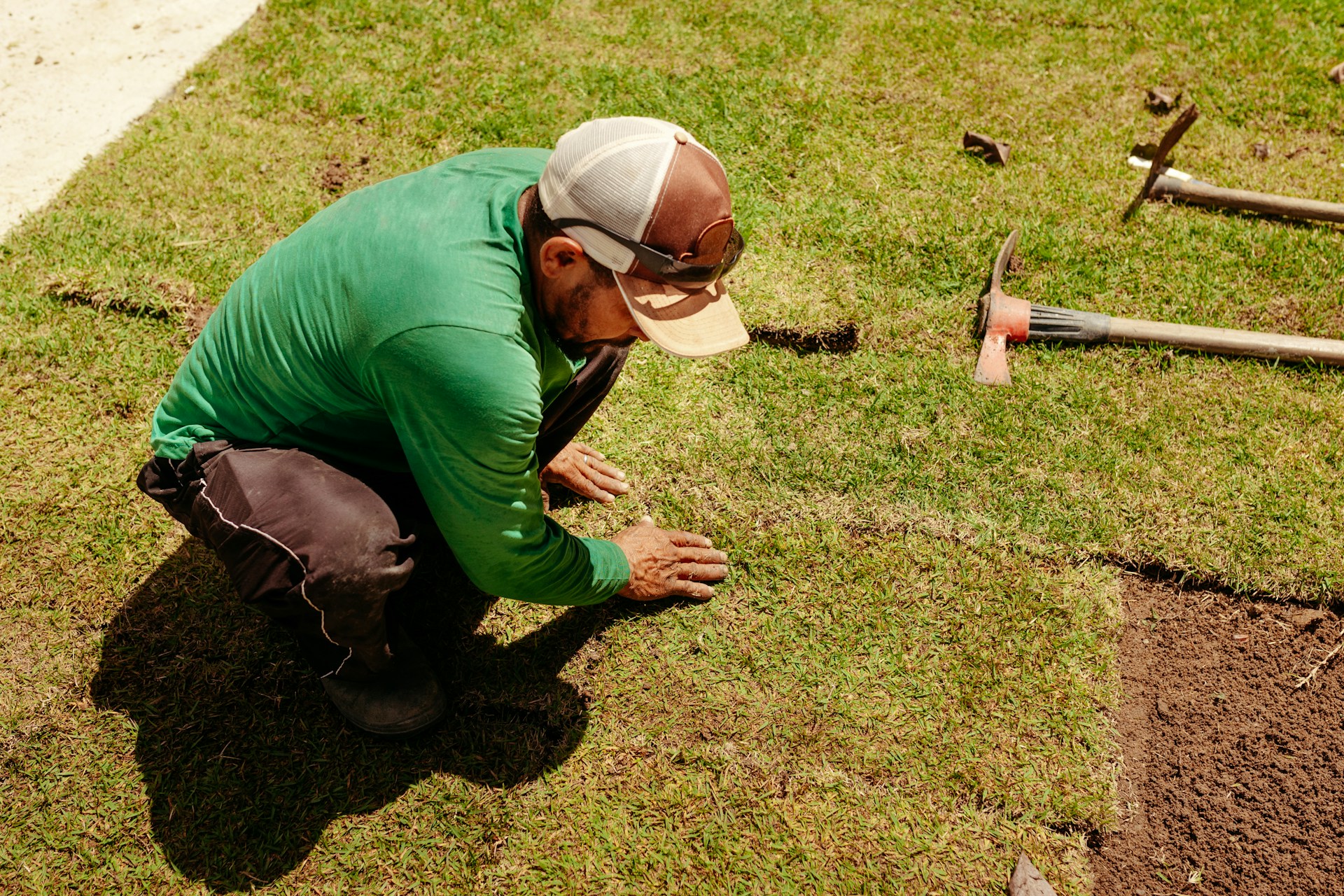
You might be thinkin’ mulch is only for flower beds, right? Nah, it’s actually got a decent job when it comes to sod installation too. Mulch helps in moisture retention like a champ. After throwing down fresh Bermuda grass or Zoysia sod, that top layer of soil tends to dry too quick under hot sun. Putting mulch around them edges or even lightly over exposed soil near walkways can help keep things damp longer.
It ain’t just about water either. Mulch actually keeps soil temps a bit more steady. If it’s blazing in Texas or chilly at night, it protects the grass roots from sudden temp flips. You wouldn’t wear shorts in the snow, right? Same logic. For St. Augustine sod, especially, which hates the cold, that buffer layer makes a difference.
Plus, not having mulch at the sod borders? You’ll get runoff. Every time it rains, all that precious topsoil and fertilizer gonna float away. Mulch slows it. Breaks the splash. Stops soil from washing off into sidewalks or driveways. It might seem small but later you’ll be glad it’s there.
Moisture Retention and Root Development
When you lay new sod, the number one killer is usually dry-out. Folks water it once or twice and think it’s done. But sod roots ain’t even locked in yet. Putting a thin layer of mulch near the edges or on surrounding bare dirt patches keeps the water locked longer in the soil.
Moisture retention means less frequent watering. Especially handy in areas with water restrictions or where folks forget. Think of mulch like a sponge cover—keeps your sod roots drinkin’ slow and steady, even if you miss a day. Pretty handy if you’re dealin’ with commercial sod or bigger yards.
And about roots—mulch can actually make that topsoil a lil’ more comfy. It helps stop hard crusts from forming. That way, new roots from the sod slabs can break through easier. Especially true with Fescue grass, which prefers looser soil. If your lawn gets sun-blasted every afternoon, mulch really helps roots stay chill and dig in better.
Preventing Weed Invasion Around Sod
Fresh sod’s kinda like fresh concrete. Folks walking on it, wind blowin’ stuff on it—it’s open season for weed seeds. Using mulch around the sod patches or in spaces between beds can help block light and stop weeds from poppin’ up.
Ain’t nothin’ worse than layin’ down perfect St. Augustine sod and seein’ crabgrass takin’ over two weeks later. Mulch helps slow that down. It don’t kill ‘em but makes it harder for ’em to start. Plus, it keeps the dirt from blowin’ everywhere, which is where weed seeds like to settle.
If you’re usin’ pre-emergent herbicides, mulch can also kinda shield it a bit longer from being washed away. That means the weed control you apply stays put instead of drainin’ off with the next heavy rain. Less mess, less headache.
Mulch Types That Actually Work with Sod
Not every mulch fits. You go throwin’ chunky bark mulch right next to thin-cut Zoysia sod, that stuff ain’t gonna break down right. For sod jobs, you want mulch that’s either fine pine, shredded hardwood, or even composted leaves if that’s available. Avoid the dyed stuff too—red mulch looks good but can leach weird stuff into wet soil.
If it’s a residential lawn install, you might be okay with something prettier like cedar mulch around the beds. But when it’s a commercial sod job, better go with something neutral and practical like pine fines. It blends well and don’t stink up the place either.
In shady yards, where grass growth already slow, don’t use too thick of mulch. Go overboard, and you’ll choke off what lil’ light the soil’s gettin’. Keep it light and fluffy, no deeper than 2 inches max near sod. More than that, and you’ll end up creatin’ fungus and root rot drama.
Reducing Soil Erosion Post-Sod Installation
After sod gets laid, the soil’s still loose. Especially if the yard had grading done. Add wind, rain, or sloped yards, and stuff starts movin’. Mulch acts like a lil’ security guard, keepin’ topsoil from erodin’ while the sod turf sets in place.
On slopes or near drains, puttin’ mulch at the lower end of sod can help slow down runoff. It’s not gonna stop a flood, but it’ll soak up a lotta that water before it rips out your grass. Good mulch beds can reduce erosion by 20–40%, dependin’ on how steep and what material’s used.
If you’re usin’ straw blankets or erosion mats on big installs, mulch is a nice companion for areas those mats don’t cover. Stuff like wood fiber mulch breaks down slower, holds its place better than hay, and don’t fly away with the wind. It’s kinda like insurance for your soil.
Aesthetic Finishing and Functional Borders
Mulch ain’t just functional—it ties the yard together. Around sod lawns, you can use mulch to line up borders where the sod meets flower beds, walkways, or driveways. Keeps stuff lookin’ clean without needing plastic edging or bricks.
Also keeps mower blades from clip-pin’ too close to your new Bermuda sod. If you mulch a 3-6 inch strip around the border, it gives you a no-mow zone. You won’t be scalpin’ the edge by accident, and less chance of dirt spray when mowin’.
And lastly, mulch hides weird gaps. Let’s say your sod don’t fit perfect against a tree trunk or awkward corner near the sprinkler box. Throw mulch there, it blends the spot in while keepin’ moisture right where roots need it. Plus, it looks intentional—not like you missed a patch.